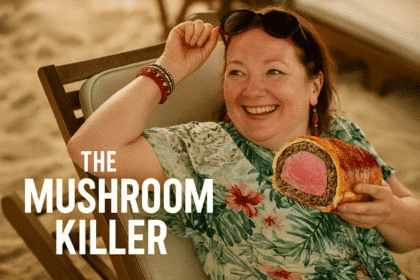Getty Images yesterday held a Webinar to announce the release of its “Building Trust in the Age of AI” report. The study aims to empower marketers and communications professionals by providing data-driven insights into the integration of AI-generated content within marketing and communications strategies.
Supported by the company’s cutting-edge visual and creative intelligence platform, VisualGPS, the report draws from the global perspectives of over 30,000 adults in 25 countries from 2022 to 2024. It offers valuable insights into consumer attitudes toward AI-generated content in advertising, its impact on brand trust, and key factors that distinguish exceptional visual content, irrespective of whether it is captured by humans or generated by AI.
One of the central findings of the report is the critical importance of authenticity and trust in consumer engagement with brands employing AI-generated imagery. With almost 90 per cent of consumers globally wanting to know whether an image has been created using AI, this focus on authenticity emphasises the importance for brands to thoughtfully consider how to incorporate AI-generated images into current workflows.
Across the APAC region, there are mixed feelings toward AI, coupled with concerns about job displacement and misinformation spread, reflecting cautious optimism. This cautious approach contrasts with the global narrative of excitement surrounding AI, highlighting unique cultural and economic considerations. Additional differentiators across the region include:
- Preference for Unretouched Visuals: 64 per cent of ANZ respondents question the authenticity of AI content, valuing human elements and ethics, more than the global norm (52 per cent). The preference for authenticity and unretouched visuals suggests a deeper appreciation for natural and genuine imagery. This preference underscores the importance of authenticity in visual content and differs from the global narrative, which may place greater emphasis on innovation and technology.
- AI and Productivity: The belief among over 80 per cent of APAC respondents that AI can enhance productivity reflects a pragmatic outlook on technology’s role in the region. This focus on practical benefits aligns with global sentiments but underscores the importance of tangible advantages in the adoption of AI technology.
“Businesses across all industries are asking the question, ‘should we be engaging with AI generated content and if so, how?’ Successful advertising has always been grounded in highly creative and authentic visual storytelling – and this remains as true today as ever, regardless of whether a brand chooses human-shot or AI-generated content. Our report serves as a compass for brands wanting to move beyond the hype and deeply understand their audience’s expectations so they can speak to them with the right content in the right channels, building consumer trust and driving meaningful action,” said Dr. Rebecca Swift, Getty Images’ global head of creative content.
To help brand professionals and business leaders in navigating AI-generated content creation, Getty Images’ report “Building Trust in the Age of AI” outlines the following key considerations:
Is AI the right tool for your campaign?
Reflect on the core message of your campaign and carefully evaluate which type of imagery (AI-generated, UGC, pre-shot), including the format (image or video), aligns with its objectives. The report revealed that 98 per cent of consumers agree that ‘authentic’ images and videos are pivotal in establishing trust, indicating that where trust is the key aim, pre-shot content may perform better in engaging consumers.
VisualGPS also revealed, given the high levels of trust and expectations associated with industries such as healthcare/pharmaceuticals and financial services they are increasingly expected to be transparent so a thoughtful approach to content types will protect your consumer relationship. However, there’s more openness amongst ANZ consumers for AI’s creative capabilities in areas such as travel and automotive.
AI is a tool, not a replacement for creativity
From prompting highly conceptual image outputs to crafting a full campaign with human-shot visuals from scratch, creativity remains indispensable in connecting with consumers, especially amid growing distrust and visual saturation – in fact, 75 per cent of ANZ respondents agree ‘It’s getting to the point where I can’t tell if an image is real’. Generative AI tools can only access what has been, not react to the present or future—or consider how people currently feel about a brand or product. Human creativity continues to be paramount in forging that connection.
Keep authenticity and transparency in focus
According to VisualGPS research, people define ‘authentic’ as ‘real’ or ‘the real thing’, followed by ‘true’ or ‘truthful’, with 87 per cent of respondents considering it important for an image to be authentic. The research also revealed that AI-generated depictions of non-human subjects were perceived as less misleading than AI-generated images featuring people or real products. If authenticity is a focal point for the campaign, consider using high-quality pre-shot images and videos to connect with your audience.
Furthermore, 86 per cent of ANZ respondents favour labelling AI-generated visuals with a desire for greater clarity and transparency. If you opt for using AI-generated content, particularly if featuring people, it’s important to consider this so your audience feels you have been transparent with them.
Safeguard against potential risks
While many tools can ignite your creativity, some tools are safer than others. Generative AI by Getty Images, trained exclusively off permissioned content from Getty Images’ creative library, is 100 per cent commercially safe to use and offers indemnification on every image, empowering you to create and market with confidence and free from legal risk.








